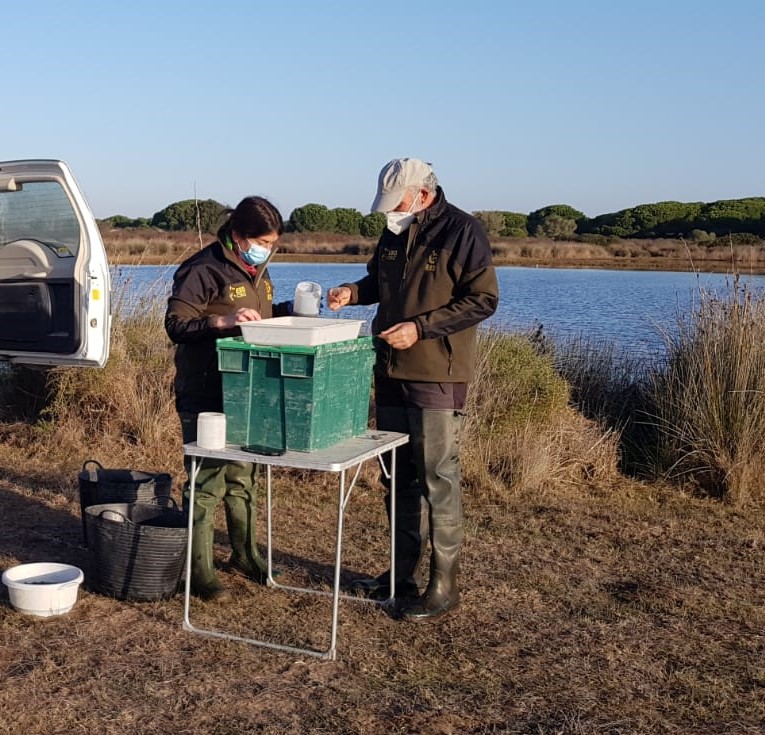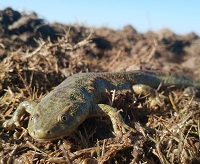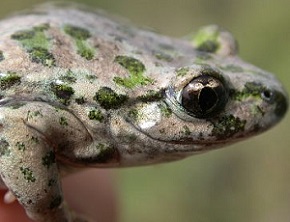Amphibians winter sampling which is annually performed by the ICTS-RBD Natural Processes Monitoring Team in 24 locations in the Doñana Natural Area, has been carried out during the last two weeks of January. The severe drought (109 l/m2 until December 2021) has affected these taxa considerably and does not show positive numbers this year, since only 13 out 24 points had water at the time of sampling. We have found 9 sites with amphibians (one in the marsh, one stream, 6 lagoons and one in a "zacayón", name given locally to the artificial water excavations for the water supply to cattle and other animals). Seven out 11 species that exist in Doñana (including 5 iberian endemisms) and a total of 353 individuals have been observed (twenty times less compare with 2020 in the same time of period).
Larval stages of Iberian spadefoot toad (Pelobates cultripes) and adults of the Iberian ribbed newt (Pleurodeles waltl) have been detected in 4 and 3 localities, respectively. These species are common in Doñana and are associated with permanent water since, in the case of the Iberian spadefoot toad, larval development can last between 3 and 6 months.
The rest of the species have only been detected at one site, which indicates that amphibians face breeding habitat constrains. The Iberian painted frog (Discoglossus galganoi) an Iberian endemism, has been the most abundant amphibian, with many tadpoles observed in small isolated puddles in the marsh. Last year, around this time of the year, precipitation were much higher (almost twice as much), and there were small shallow-water ponds good for the Natterjack toad (Epidalea calamita), where they can lay their eggs.
Early breeders species such the Natterjack toad, the Iberian spadefoot toad and the Iberian parsley frog (Pelodytes ibericus) will find ecological constrains if drough continues before they can complete metamorphosis. We will have to wait for spring sampling to verify the continuity of the presence of water at the sampling sites and check if the amphibian larvae detected have successfully completed their development and if there are spawns and tadpoles of late breeders, such as the Mediterranean tree frog (Hyla meridionalis).



 Amphibians, one of the taxa most severely impacted by low winter precipitations
Amphibians, one of the taxa most severely impacted by low winter precipitations

 15_01_2015 Íñigo Martinez, An integrative approach to phylogeograhy, investigating the evolutionary history of two co-distributed amphibians at different geographic and temporal scales
15_01_2015 Íñigo Martinez, An integrative approach to phylogeograhy, investigating the evolutionary history of two co-distributed amphibians at different geographic and temporal scales Rana perezi
Rana perezi Seminario Acebuche 18 mayo 2016
Seminario Acebuche 18 mayo 2016